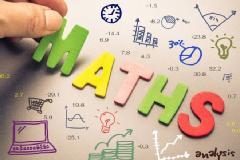This lecture is for class 12th students. they wil learn python language in this class,
they will have to bring their own laptop with pyhon software downloaded.
Course content
- Basic input-output operations
- Basic operators
- Data types and variables
- Loops, lists, and list processing
- Boolean values and conditional execution
- Functions and tuples
- Dictionaries and data processing
- Python courses can take 2–6 months to complete.
- Career opportunities
- Python courses can lead to careers as a Python developer, Python programmer, software developer, or web application developer.
- Python overview
- Python is an object-oriented, high-level programming language.
- It was developed by Guido van Rossum and released in 1991.
- The name "Python" is a reference to the British comedy group Monty Python.
-
Python Basic Syntax and Data Types
Once you have installed Python on PCs and Macs, you must know how to write a program. But before that, this course will introduce you to the basic syntax, input and output operations, comments, variables, data types, and typecasting in Python. While variables store data of multiple types, each type has a different function. You will learn each data type category and cast them from one type to another.
Subjects covered in basic syntax and data types in Python:
- Python input and output operations.
- Comments
- Variables, rules for naming variables
- Basic Data Types in Python
- Typecasting in Python
3. Operators in Python
Operators in a programming language instruct the machine to perform a particular operation on variables and values. Python operators are of multiple types, and each defines a unique operation. For example, the arithmetic operator “+” instructs the interpreter to perform “addition”. In this part of the course, you will be introduced to each of these operators and will understand where to use them and how they function in an instruction.
Subjects covered in operators in Python:
- Arithmetic operators
- Assignment operators
- Comparison operators
- Logical operators
- Identity operators
- Membership operators
- Bitwise operators
4. Strings in Python
Strings are usually the collection of alphabets, words, or characters. These are some of the primitive data structures and building blocks for data manipulation. This part of the Python course will introduce you to strings and their representation, multiple string methods, string indexing and slicing, and formatting strings.
Subjects covered in strings in Python:
- Creating strings
- String formatting
- Indexing
- Slicing
- String methods
5. Lists
Python programmers use lists to store multiple items in a single variable. Lists are one of the four main in-built Python data types, and you can identify them when mentioned within square brackets. List items maintain an order, are changeable, and allow duplicate values. This section will cover the basics of creating Python lists, including list indexing and slicing, and different list methods.
Subjects covered in lists in Python:
- Creating lists
- Properties of lists
- List indexing
- List slicing
- List of lists
- List methods
- Adding, updating & removing elements from lists
6. Tuples
Another in-built Python data type, other than lists, is tuples and it also stores multiple items in a single variable. Python tuple items are written within round brackets, and these collections maintain an order and are unchangeable. This part of the Python course will give in-depth knowledge of tuples, including their syntax, properties, indexing and slicing, and tuple methods.
Subjects covered in tuples in Python:
- Syntax to create tuples
- Tuple properties
- Indexing on tuples
- Slicing on tuples
- Tuple methods
7. Sets
Just like Lists and Tuples, Sets form an essential part of Python’s in-built data types that can store several items in a single variable. These elements are written within curly brackets and are unordered, unchangeable, and unindexed. Sets are different from the previous two data types, and learners will know the difference in this section. Plus, you will learn the syntax for creating sets, their operations and methods, and updating sets.
Subjects covered in sets in Python:
- The syntax for creating sets
- Updating sets
- Set operations and methods
- Difference between sets, lists, and tuples
8. Dictionaries
Lastly, you will know dictionaries, one of the four in-built Python data types used to store data values in a key:value pairs, and are written within curly brackets. This section will introduce you to the creation of dictionaries and storing data within them, along with knowledge of keys and values, ways to access elements of dictionaries, and different dictionary methods.
Subjects covered in dictionaries in Python:
- The syntax for creating Dictionaries
- Storing data in Dictionaries
- Dictionaries keys and values
- Accessing the elements of Dictionaries
- Dictionary methods
9. Python conditional statements
While you are creating a Python program, you may need to put some conditions. For example, if a condition is true, then the next statement will be executed; otherwise, another statement will be printed. Python conditional statements consist of if statements, if-else statements, and if-elif-else statements. This section of the course will help you set logic with each of these conditional statements.
Subjects covered in conditional statements in Python:
- Setting logic with conditional statements
- If statements
- If -else statements
- If-elif-else statements
10. Loops in Python
Just like conditional statements, loops in Python are vital to know. Looping refers to the execution of repeated statements until a specific condition is met. This programming language mainly uses while and for loop commands. You will learn them in this section, along with the use of break, continue, and pass statements and the use of the range function.
Subjects covered in loops in Python:
- Iterating with Python loops
- while loop
- for loop
- range
- break
- continue
- pass
- enumerate
- zip
- assert
11. List and Dictionaries comprehension
Python List and Dictionaries comprehension offers shorter syntax to create new lists or new dictionaries depending on the value of an existing list. This section will define why list comprehension is used and the syntax for list comprehension and dict comprehension.
Subjects covered in list and dictionary comprehension in Python:
- Why List comprehension
- The syntax for list comprehension
- The syntax for dict comprehension







